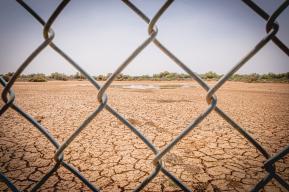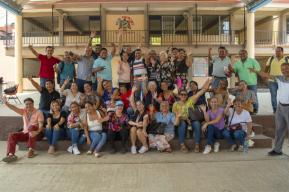News
UNESCO hosts SHELTER workshop on GLOCAL user requirements for Disaster Risk Reduction and Cultural and Natural Heritage

Launched in July 2019, Sustainable Historic Environments hoListic reconstruction through Technological Enhancement and community-based Resilience (SHELTER) is a Horizon 2020 EU funded 4-year project. The project aims at developing a data driven and community-based operational knowledge framework that will bring heritage managers and the scientific community together, with the objective of increasing resilience, reducing vulnerability and promoting better and safer reconstruction in historic areas to cope with climate change and natural hazards.
Heritage plays a significant role in fostering resilience and providing assets for sustainable development based on its cultural value as well as it socio-economic value. The adverse impacts of hazards and extreme events are threatening the integrity and value of the world heritage properties and sites. It is therefore crucial to identify the vulnerabilities of the heritage, to assess its value and to manage to reduce disaster risks at heritage sites in order to mitigate the impacts of hazards on the heritage, in both its tangible and intangible forms.
The SHELTER project takes place within the global framework of the Sendai Framework for Disaster Risk Reduction 2015-2030, especially its “strengthening disaster risk governance to manage disaster risk” component.
Disaster risk governance at the local, national, and international levels is of great importance for an effective and efficient management of disaster risk, notably for cultural and natural heritage. Clear vision, regulation/plans, competence, local knowledge, modern technology, and effective coordination within and across sectors, as well as participation of relevant stakeholders, are needed. Strengthening disaster risk governance within heritage for prevention, mitigation, preparedness, response, recovery and rehabilitation is therefore necessary. These elements also foster collaboration and partnership across mechanisms and institutions for the implementation of instruments relevant to disaster risk reduction and sustainable development.
UNESCO has been working closely with Member States to study the effects of natural hazards and climate change on UNESCO cultural and natural world heritage sites, and discover ways for UNESCO sites to better work in disaster risk management including through emergency preparedness, heritage risk assessment, heritage data collection, and risk awareness raising.
The purpose of the international workshop in Venice was to identify and prioritize the main top-down user requirements for SHELTER tools and take stock of existing international and national regulatory frameworks dealing with multi-hazards contexts for disaster risk management in cultural and natural heritage.
The workshop was structured upon an interactive framework and around discussions, with SHELTER project partners providing substantial inputs on the top down user requirements encompassing the entire disaster risk management cycle from early warning to post-disaster actions.
A multi-stakeholder exercise was organized through an international focus group, with the interactive involvement of: 21 selected participants from international organizations, national authorities for cultural and natural heritage, local governments and institutions, cultural/natural heritage site managers, technical scholars/experts of disaster risk management in heritage and carefully selected international advisors interplayed within the framework. These participants were from 8 European countries: Albania, Bosnia and Herzegovina, Croatia, Netherlands, North Macedonia, Portugal, Spain and Italy.
The participants built a Matrix of Gaps/Challenges, a matrix for Pre/Post Disaster Management and Mind Maps of Disaster Management for each hazard (flood, earthquake, fire). In addition, information on gaps and needs in disaster risk reduction for cultural and natural heritage was collected through a questionnaire and subsequent discussion and could be analysed and applied for SHELTER tools as well as multiple work packages of the project implementation.
The workshop produced the set of requirements for SHELTER developments and their integration with internationally recognized resources and tools. Requirements identified and prioritized as well as the information collected during the workshop will be fed into the implementation of the SHELTER project.
All the developments of the project, including the workshop, will be validated in 5 open-labs, representative of main climatic and environmental challenges in Europe and different heritage’s typologies. These open labs are situated in the World Heritage site of the Area of Santa Croce in Ravenna (Italy); the coastal district of Seferihisar (Turkey), the old town of Dordrecht and its island (Netherlands), the Baixa Limia-Serra do Xurés Natural Park in Galicia (Spain) and the transboundary Sava River Basin.
This project has received funding from the European Union’s Horizon 2020 research and innovation programme under grant agreement No 821282. Tecnalia Research & Innovation (Spain) is coordinating SHELTER and the consortium is composed of 23 participants from Europe, including UNESCO.
Website https://shelter-project.com/
Links
- Flickr album : https://bit.ly/3ekPXQv
- Group photo: https://bit.ly/2TB0cZn
GLOCAL user requirements final report (D6.1) https://shelter-project.com/documents/scientific-publication...






